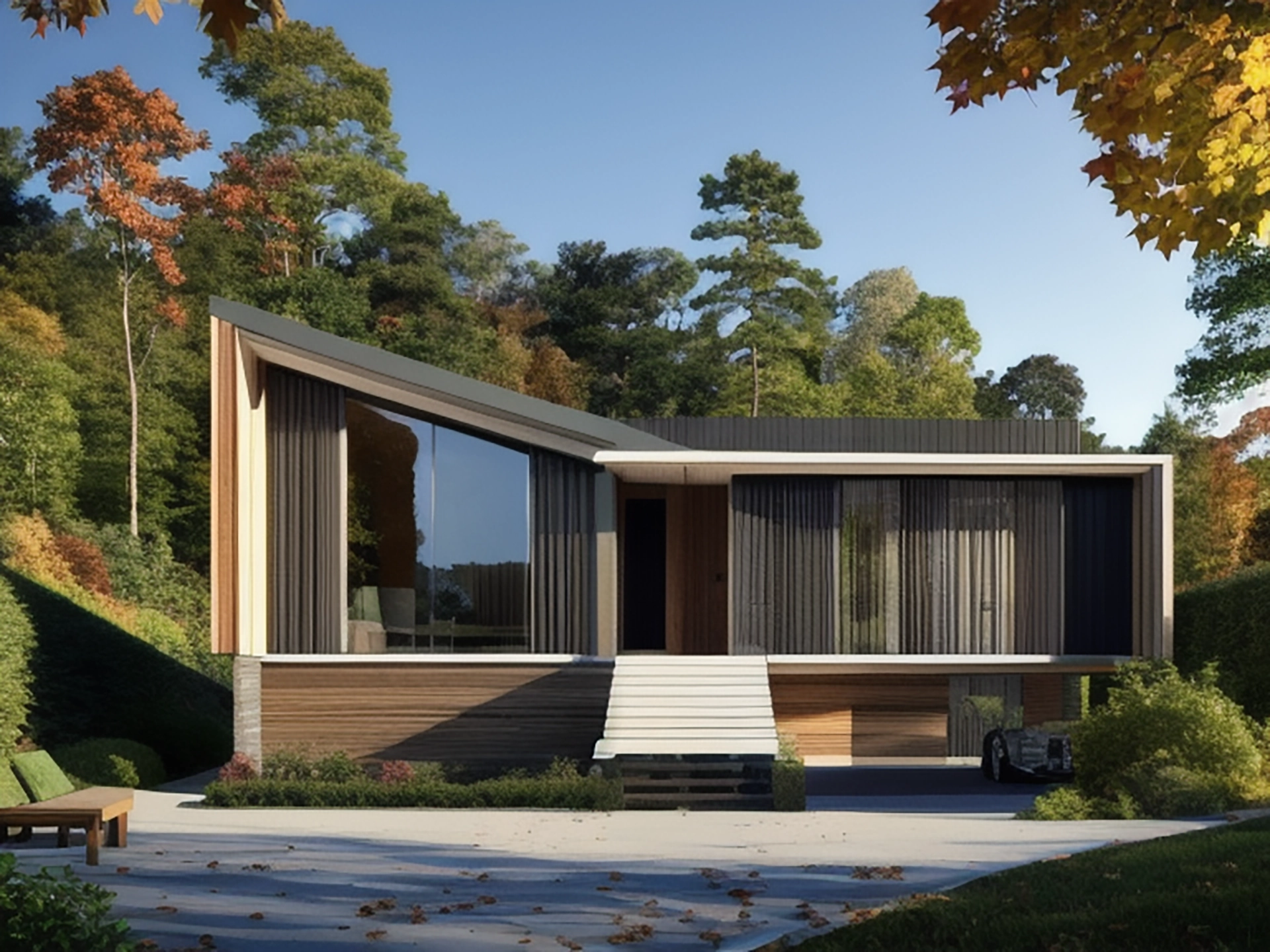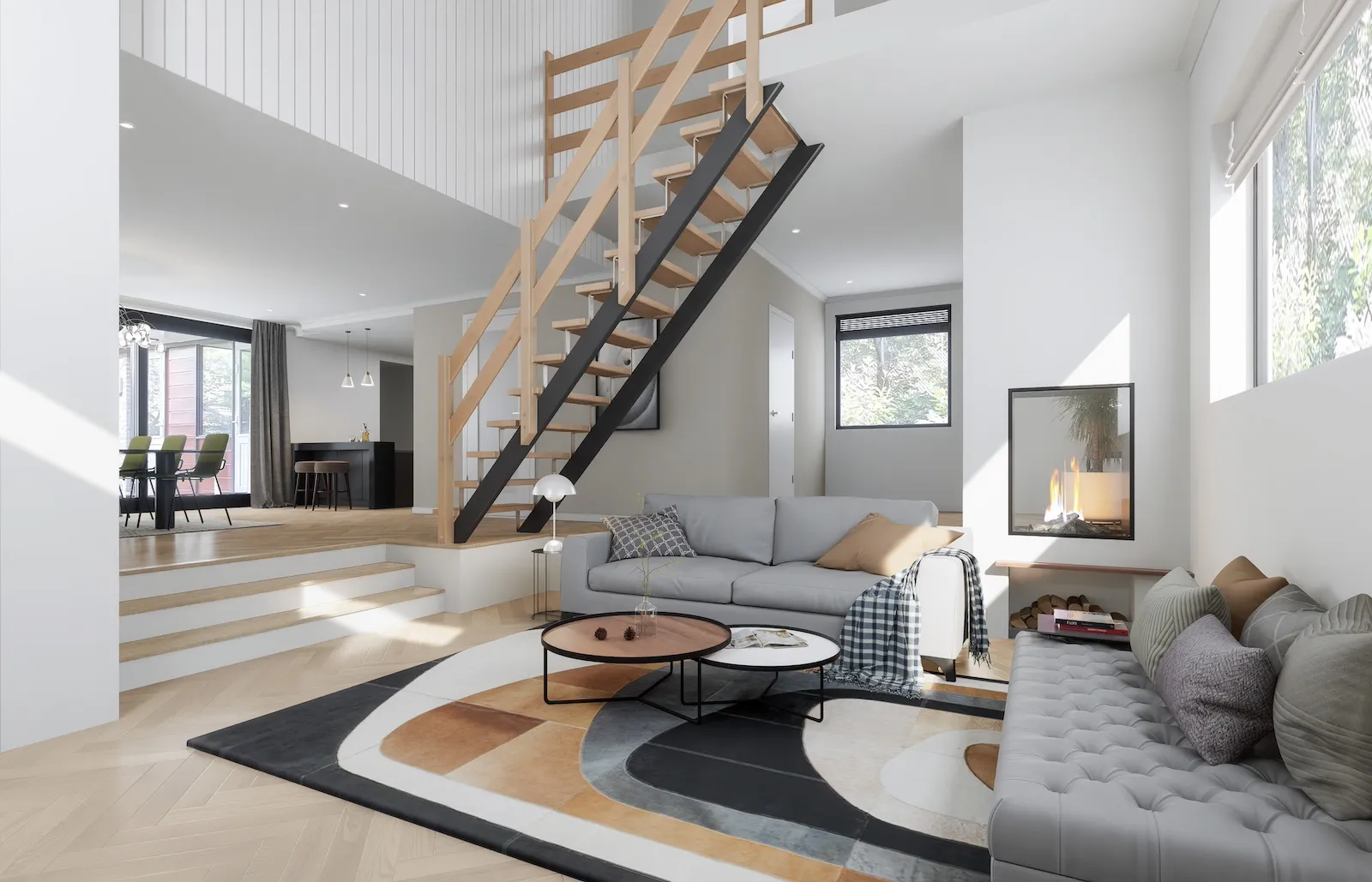
Architectural visualization is the creation of lifelike 3D images of buildings, interiors, and landscapes using special software. It helps architects and designers realistically visualize their ideas and allows for interactive modeling.
Key Takeaways:
- Architectural visualization creates realistic 3D images of buildings, interiors, and landscapes using special software, helping architects and designers see their ideas.
- Many industries, like architecture, gaming, automotive, film, virtual reality, and product design, use architectural visualization to show their work to clients.
- 3D rendering and architectural visualization save money, catch mistakes early and help market projects with lifelike models.
- Types of architectural visualization include 2D drawings, 3D models, virtual reality, and augmented reality, each serving different purposes.
- The future of architectural visualization looks bright with emerging technology.
Who uses architectural visualization?
Architectural visualization has become essential for various industries like architecture, gaming, automotive, film, virtual reality, and product design. Visualization artists are in demand by architects, designers, developers, and others to showcase their work. They create realistic 3D images for video games, digital car prototypes, sets for movies and TV shows, virtual reality environments, and product marketing.
Why do people use 3D rendering and architectural visualization?
3D rendering is becoming increasingly popular, and for good reason. It offers complete control over lighting for both indoor and outdoor scenes. This technology is particularly beneficial for architects, builders, marketers, and others as it provides a cost-effective way to explore various options without needing travel, props, or hiring photographers and interior designers.
Moreover, 3D rendering aids in maintaining consistent marketing and branding efforts over time. Unlike traditional photography, it allows for the reuse of precise color schemes for each new visualization. Additionally, 3D renders offer the advantage of conveying accurate 3D distance information, enabling exact measurements within the rendering.
Most importantly, 3D renders facilitate clear communication and understanding by providing stunning visualizations of projects and plans to customers and stakeholders.
The “3D Visualization” Process
3D visualization involves creating graphical content using specialized software, allowing us to understand structures and behavior in a virtual environment.
To start, we conceptualize the scene we want to work on. Then, we draft and build the model using a 3D editor, focusing on details like lighting and textures to make the scene realistic. We adjust the environment’s mood and choose the angle for the final image. Finally, we render the scene, fine-tuning colors and details to ensure high-quality results.
The use of 3D visualization in marketing has been increasing due to advancements in rendering technologies. This allows for the quick creation of photorealistic images without expensive photo shoots. 3D visualization offers full control over every aspect of the image, leading to eye-catching visuals across various media platforms.
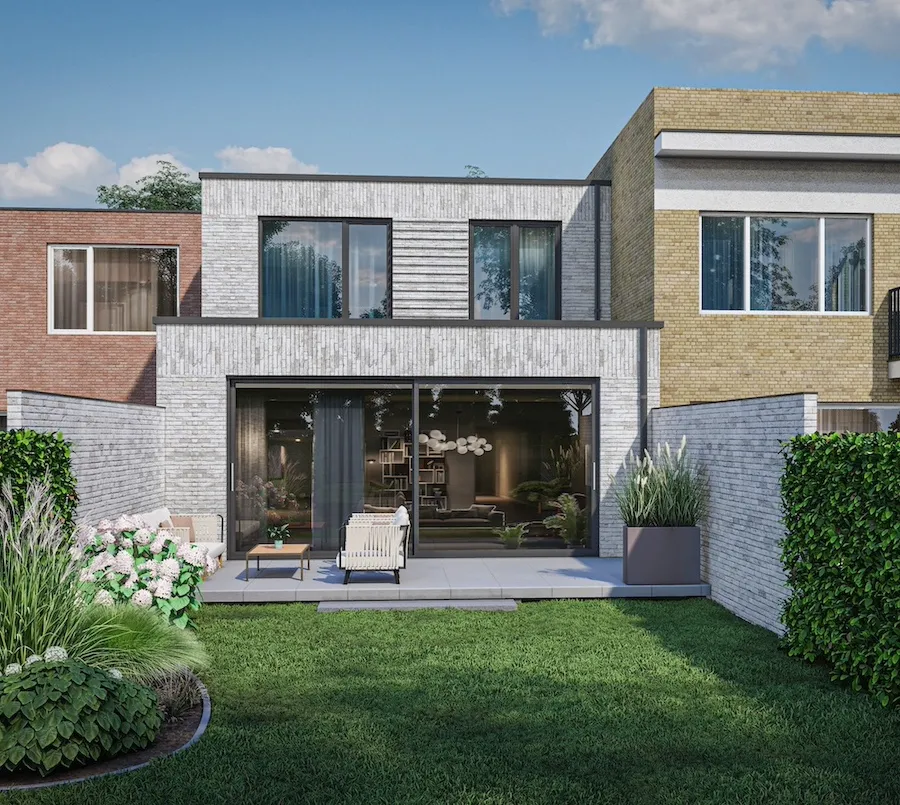 Our company specializes in 3D visualization for products, architecture, and automotive industries. With extensive experience in the field, we strive to create lifelike visualizations that make the world more beautiful.
Our company specializes in 3D visualization for products, architecture, and automotive industries. With extensive experience in the field, we strive to create lifelike visualizations that make the world more beautiful.
What are the benefits of architectural visualization?
Architectural visualization has clear advantages over traditional design methods because it produces accurate visuals that showcase a project from various angles. This helps you, as well as investors, better grasp plans and proposals.
Architectural visualization facilitates communication among stakeholders, leading to cost reductions in project management. Additionally, it enhances accuracy in measurements and material choices early on, saving time and money. By spotting design issues early, architects can minimize risks.
Architectural visualization allows for flexible solutions, enabling you to request changes during the digital design process rather than during construction. This facilitates quick adjustments by architects, minimizing resource waste and saving time.
Types of Architectural Visualizations
Depending on your project and goals, you must choose between exterior 3D visualization, interior rendering, or a mix of both. It’s essential to grasp their roles, benefits, and unique features. With this understanding, you can select the most suitable option for each aspect of your project, ensuring optimal results.
2D Drawings
A 2D drawing, a standard project document, provides project data for individuals and companies involved. It includes dates, design details, and approval history. These drawings also contain computer numerical control (CNC) machine code.
Unlike 3D models, 2D drawings have fewer ways to present ideas and a limited ability to analyze and test product designs. Sometimes, they can be hard to understand, especially for those unfamiliar with interpreting them.
3D Modeling
3D modeling is a process where special computer software creates a digital version of a 3-dimensional object. It is widely used in architecture, construction, product development, and entertainment industries.
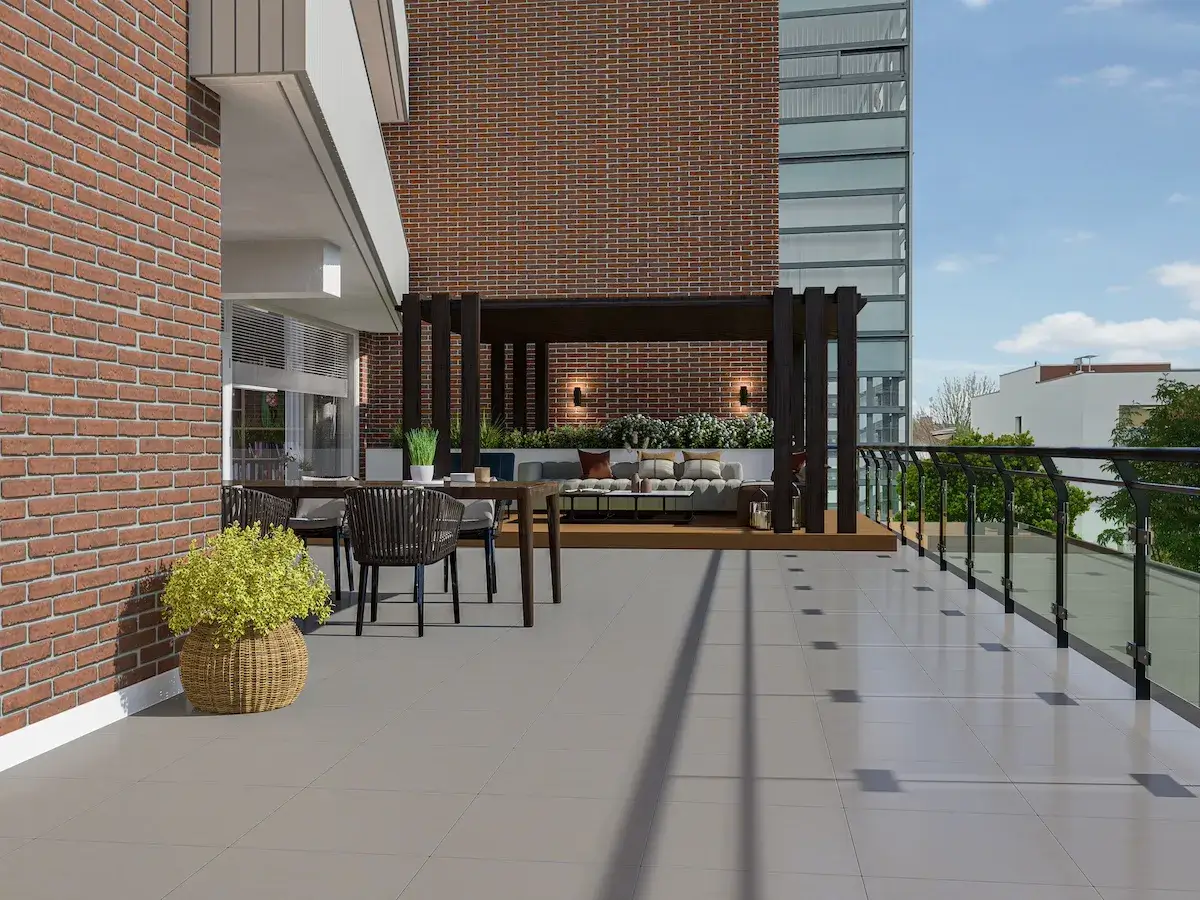 To make a 3D model, an artist starts with simple shapes like cubes or spheres and then uses tools to shape and refine them. They can change the object’s appearance by adding points and adjusting their positions. This process allows for detailed and realistic representations of objects in digital form.
To make a 3D model, an artist starts with simple shapes like cubes or spheres and then uses tools to shape and refine them. They can change the object’s appearance by adding points and adjusting their positions. This process allows for detailed and realistic representations of objects in digital form.
Virtual Reality
Virtual reality (VR) is a computer-generated 3D world where users can explore and interact with their surroundings in a way that feels real. It’s made using computer technology; users might wear special devices like goggles to experience it fully. The more users can get into the VR world and forget about the real world around them, the more they feel like they’re there, even if what they’re experiencing is imaginary.
Augmented Reality
Augmented Reality (AR) is like adding extra layers to the real world using computer-generated information. This includes visuals, sounds, and other sensations. AR works through devices like apps, screens, or projectors, blending digital stuff with what you see around you.
AR is gaining popularity, especially in mobile tech and business. It helps companies understand real-world things better by giving extra info. For example, it can help companies make smart decisions and learn about customer habits using data.
In simple terms, AR enhances what you see, hear, or feel in the real world by adding digital content. Unlike virtual reality, which creates a whole new world, AR just adds stuff to what’s already there. While still evolving, it’s expected to become more prevalent, especially with wearable gadgets like smart glasses on the horizon.
History of Architectural Visualization
While 3D renderings are a modern development, the concept of architectural visualization dates back thousands of years. Ancient civilizations like Egypt used drawings, paintings, and physical models to plan buildings, with the famous pyramids as early examples.
Imhotep, an ancient architect, is credited with designing the pyramids, showcasing advanced visualization skills. Over time, other civilizations adopted similar techniques, leading to more sophisticated plans resembling modern blueprints. The transition to 3D rendering began around 50 years ago with the advancing of specialized software, evolving into the vivid visualizations we have today.
Why Are 3D Renderings Important in Architectural Design?
3D renderings have become a crucial part of architectural designs. Here’s an elaborative list of reasons to show why 3D renderings are vital.
1. You Can Explain Your Ideas to Anybody
With more people working remotely and collaborating online, CGI has become useful for showing architectural designs. Architects can use 3D visuals to give detailed presentations to clients and others, no matter where they are. This makes it easier for everyone to understand and give feedback on the designs.
2. It’s Cost-Effective
In recent years, the cost of 3D rendering technology has dropped significantly, making it accessible to more people. This means both you and the architect can save money.
Designing was time-consuming and required precise attention to detail, driving up costs. But now, with affordable 3D modeling software, bringing ideas to life is quick and straightforward. Whether the project is big or small, you can easily understand and visualize concepts, leading to smoother communication and reduced expenses for everyone involved.
3. You Can Detect Project Errors Early
Architectural visualization helps catch problems in a project before it’s built, saving time and money. It shows the final design so everyone involved can work together to fix any issues. For example, if a wall blocks a view, you’ll see it early. If materials don’t look good, you’ll know before construction starts, allowing for adjustments to make the design perfect.
4. You Can Use 3D Models as Marketing Tools
Using 3D rendering isn’t just beneficial for architects but also for you. It’s a great marketing tool that helps showcase projects globally. For instance, if you are building an apartment complex, you can use 3D renders to give potential buyers a preview of the finished product, just like architects can offer virtual tours.
Similarly, if you’re working with a luxury hotel owner, you can create interactive views of their rooms and amenities to attract more guests.
Overall, 3D renders simplify processes, expand client bases, and allow architects to showcase their skills worldwide. It’s becoming an industry standard, so staying up-to-date is key to staying competitive.
5. You Can Make More Engaging Presentations
Having clear visuals is super important in online meetings. Good-quality 3D images help people understand complex designs better and have better discussions. So, 3D visualization in online presentations is a big deal in today’s architecture world.
Other Applications of Architectural Visualization
Architecture visualization is widely popular and is used extensively in the modern world. Let’s explore further into some other applications of Architecture visualization.
Real Estate Marketing
Architectural visualization, or arch viz, is changing how real estate is marketed. Instead of just photos or blueprints, it uses fancy 3D pictures and virtual reality to make things more real. This lets people look around properties like they’re there, making them feel more connected to the space.
And as technology gets better, adding things like AR and VR will make it even cooler. Architectural visualization is shaking up real estate marketing by making properties look awesome and easier to sell.
City Planning
Urban visualization, also known as aerial rendering, is a helpful tool for planning how cities grow and change. By making high-quality pictures of urban ideas, you can understand better how cities develop and plan for the future.
It’s important to know how these changes will affect city planning as cities grow quickly. Aerial renders give a clear, visual idea of what urban development projects could look like, which helps city designers and planners make decisions. These pictures show how buildings, roads, and the city’s layout fit together. Plus, they make it easy to explain these ideas during presentations or discussions with others involved in city planning.
Interior Design
3D interior visualization services create realistic 3D models of building interiors, essential for architects and designers to showcase their design solutions. This technique is widely used in architecture, accurately portraying interior elements like fabrics and lighting. It’s not just technical work; it’s an art form that helps designers communicate better.
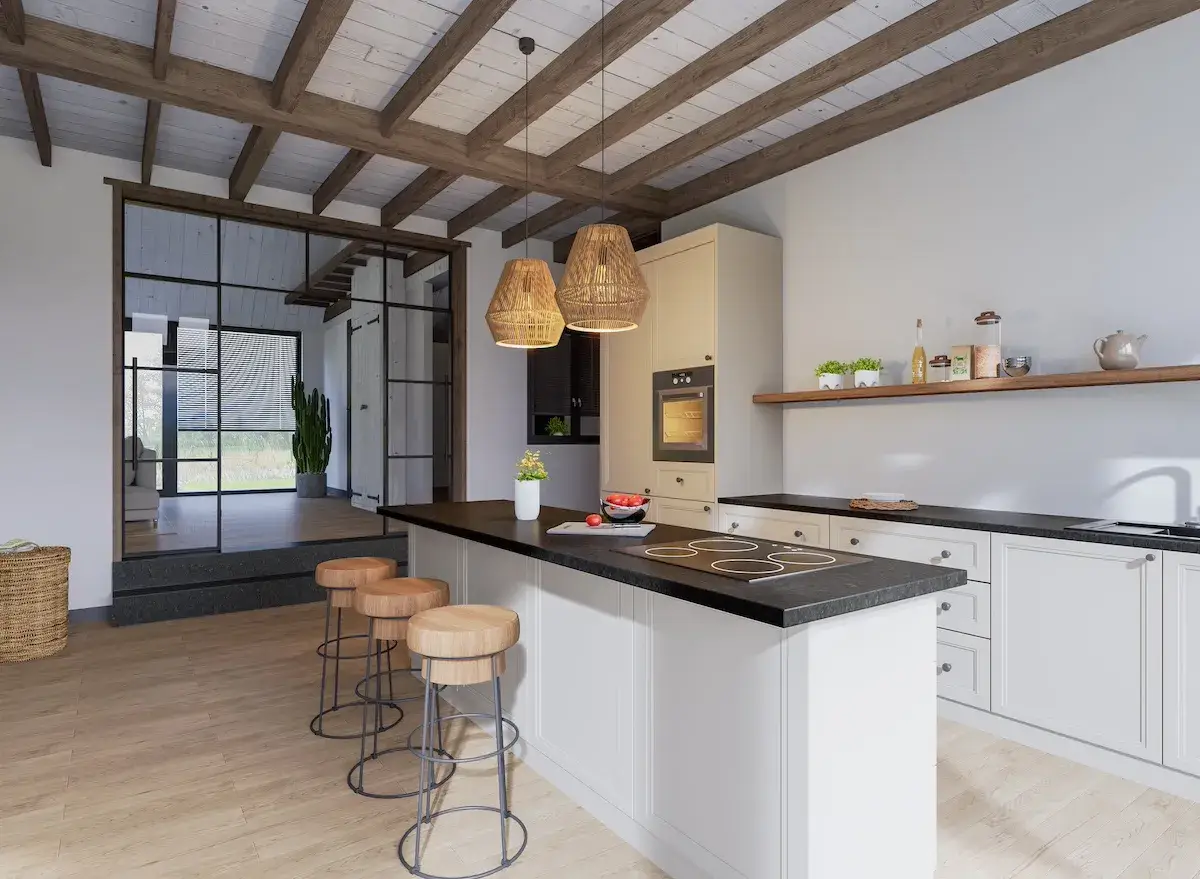 This method allows professionals to assess the overall look of a project and make adjustments early on. Architects can incorporate their feedback effectively by presenting detailed interior renderings. This is why these services are in high demand.
This method allows professionals to assess the overall look of a project and make adjustments early on. Architects can incorporate their feedback effectively by presenting detailed interior renderings. This is why these services are in high demand.
These services cater to both residential and commercial projects. Popular renderings include bedrooms, kitchens, and living rooms for homes, while for public spaces and hospitality, areas like restaurant lounges, hotel lobbies, and office workspaces are commonly visualized.
Design Presentation
Architectural visualization in design presentation helps viewers understand the project better. It allows architects to highlight important elements like shapes, light, and interiors and create narratives around the design. For instance, it shows how people will use the spaces, the benefits they offer, detailed home designs, green spaces, and rooftop views.
People often struggle with technical plans, so 3D images are invaluable. They’re user-friendly and provide a comprehensive project view, helping people connect with the architect’s vision.
This approach greatly aids the design process, ensuring everyone grasps the project fully. Architectural visualization provides a realistic understanding of space dimensions, materials, sizes, and the overall impact of the design.
The Future of 3D Architectural Visualization
3D visualization has revolutionized modern architecture by making projects faster and more efficient while maintaining high quality. Professionals can use advanced CGI tools to speed up every stage of architectural projects, from design to construction.
As technology advances, 3D visualization enhances communication and innovation drives construction and architectural design. It’s a crucial tool that has transformed entire industries and is shaping the future of architecture.
3D visualization has been instrumental in advancing modern architecture, making processes faster, easier, and more effective, and it will continue to play a vital role in shaping the architecture of tomorrow.
